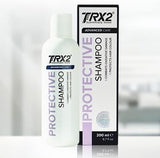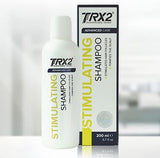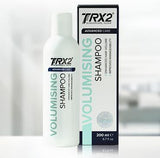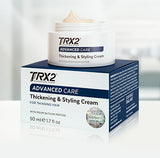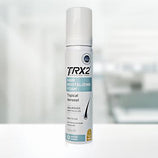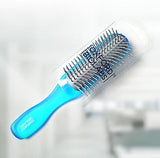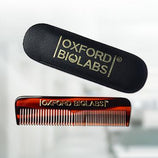It might sound mundane, but learning about the hair and scalp will give us a much better understanding of the physiological mechanisms responsible for androgenetic alopecia (pattern hair loss) and will allow you to choose the right products for you and improve your personal system on how to deal with your hair loss situation.
Contrary to popular belief, hair does not just “fall out” of the scalp. Common hair loss is actually caused by a hormone metabolite known as dihydrotestosterone (DHT). Continued exposure to DHT weakens healthy hair follicles that are genetically susceptible to degradation. Over time, the hair shafts produced by these follicles miniaturize until they fail to produce cosmetically significant hair fibres.
The hair follicle is an extremely complex mini-organ that is comprised of many specialised cells and interdependent structures. The hair follicle works in symbiosis with our skin (the largest organ in the human body) to provide sensory information, disease protection and temperature regulation for our body.
Our skin has 3 layers: the epidermis, the dermis and the subcutaneous tissue.
The epidermis is the outer layer of the skin. It consists of two levels: the stratum basale and the stratum corneum. Skin cells that originate in the stratum basale are constantly shed and replaced as they move upwards towards the stratum corneum. The epidermis is usually less than 1 millimeter thick.
The dermis is the second layer of the skin. It is comprised of collagen, elastic tissue and reticular fibres. Like the epidermis, the dermis also has two levels: the papillary layer and the reticular layer. These components give the skin its strength and looseness. The dermis is generally 2-3 millimeters thick and contains many important structures like hair follicles and oil glands.
The subcutaneous tissue is a layer of fat and connective fibres that contains many nerve branches and blood vessels that provide nourishment to the skin. The size of this layer varies.
 The hair follicle is even more complex than the skin. It has numerous components:
The hair follicle is even more complex than the skin. It has numerous components:
The sebaceous gland is a very unique structure within the hair follicle. It produces sebum, which acts as a natural conditioner for our hair and scalp.
The inner root sheath protects and molds developing hair shafts. It surrounds the hair shaft and ends below the opening of the sebaceous gland. The outer root sheath serves much the same purpose as the inner root sheath. Essentially it forms the outer layer of the hair follicle. Instead of ending at the sebaceous gland however, it extends past it towards the dermis.
The dermal papilla directs the embryonic generation of the hair follicle. The dermal papilla is essential for hair follicle development and cycling. For this reason, many new therapies are being targeted to harness the regenerative power of the dermal papilla.
The bulb exists at the lower portion of the hair follicle. It surrounds the dermal papilla and contains many inner matrix cells. These inner matrix cells are responsible for the formation of hair shafts. They differentiate themselves into distinct layers as they reach the upper part of the bulb.

Finally, the hair shaft itself has 3 layers:
The cuticle is the surface layer of the hair; this layer protects the inner structure of the hair. The cuticle is made up of transparent, protective scale-like cells.
The cortex is the middle layer of the hair that provides strength and support; contains pigments that give hair its colour.
The medulla is the innermost layer of the hair shaft; it is only present in fully grown hair.








